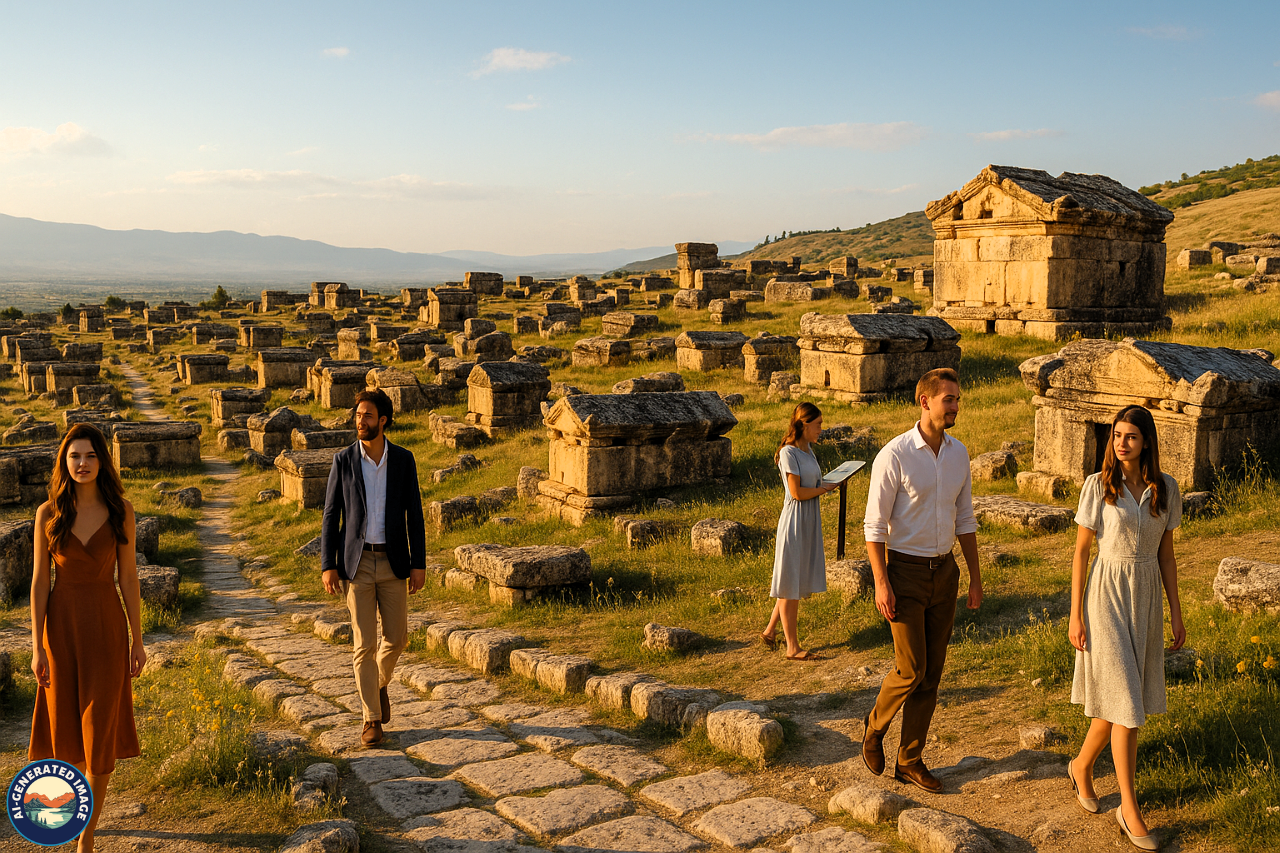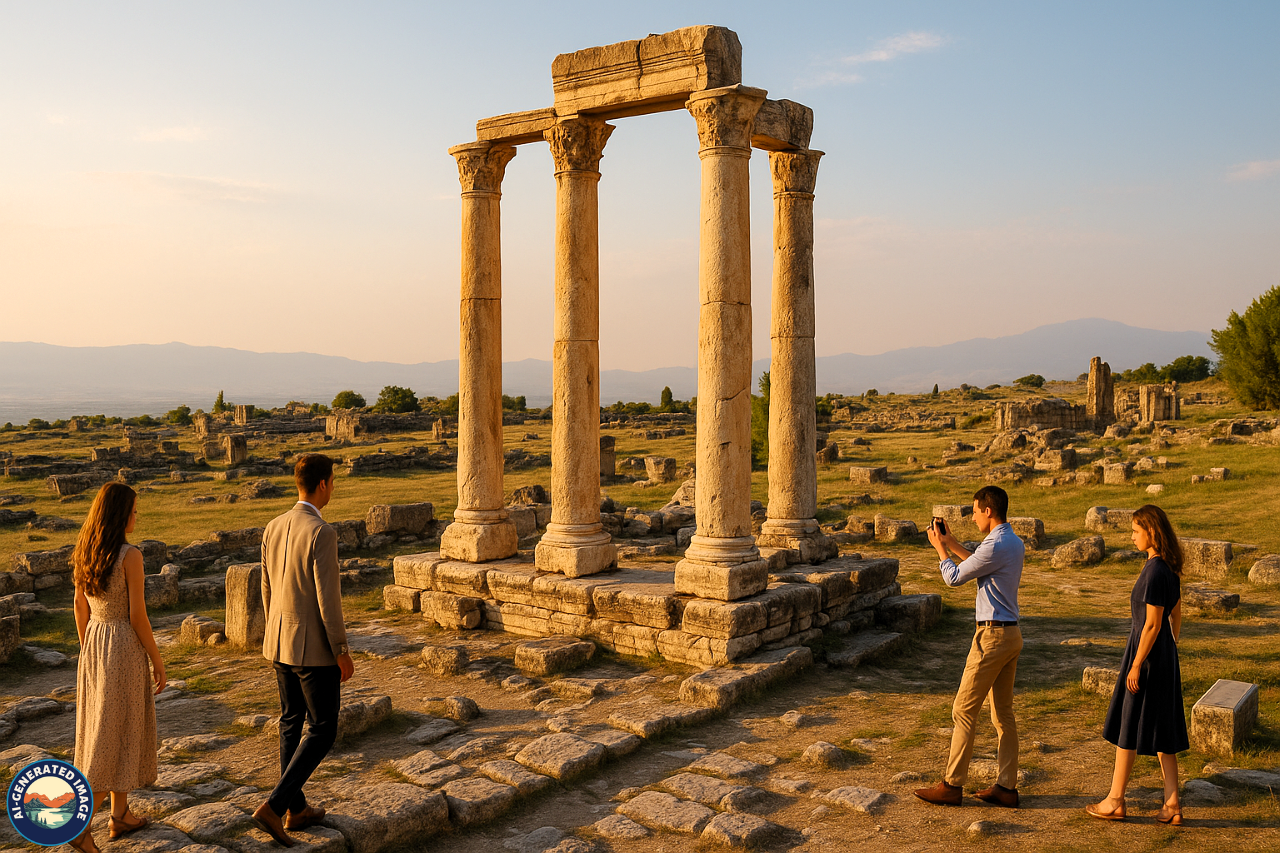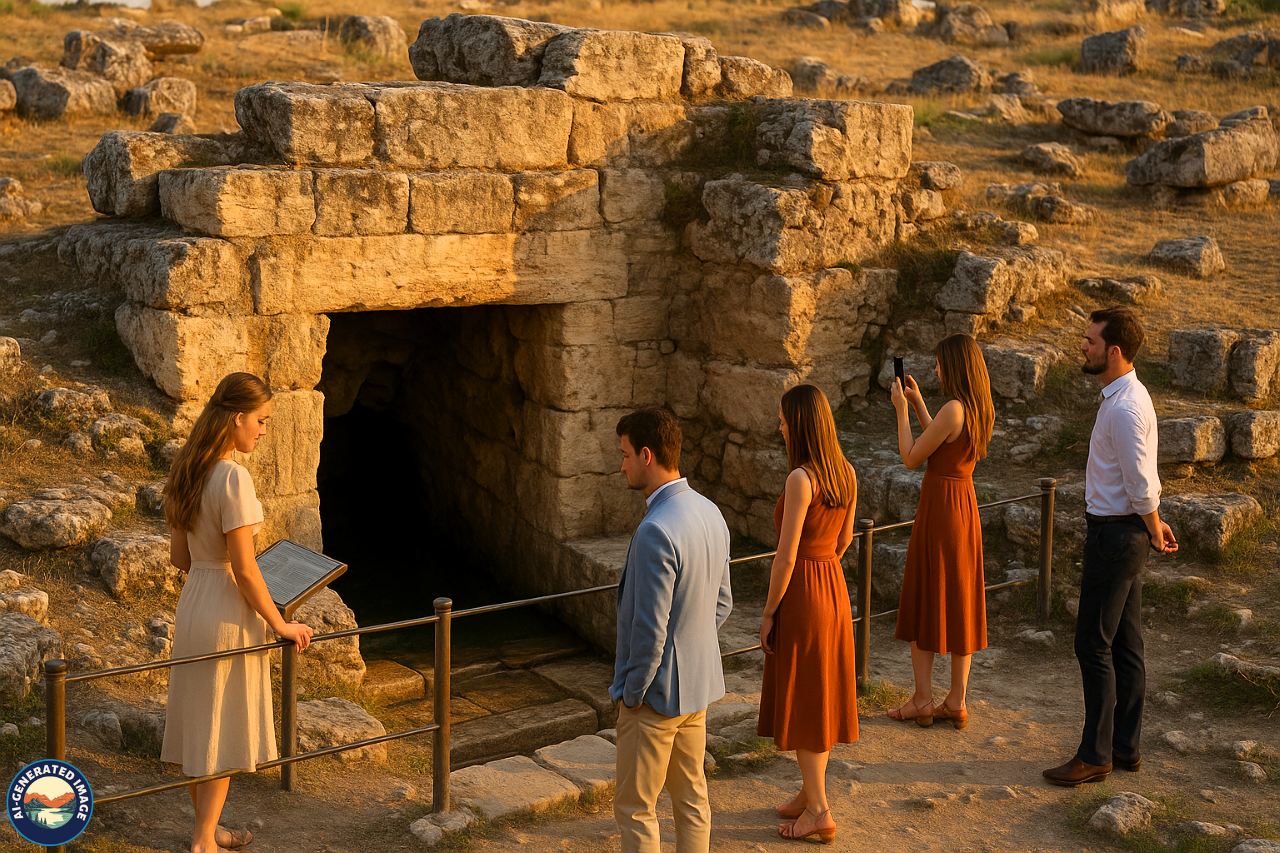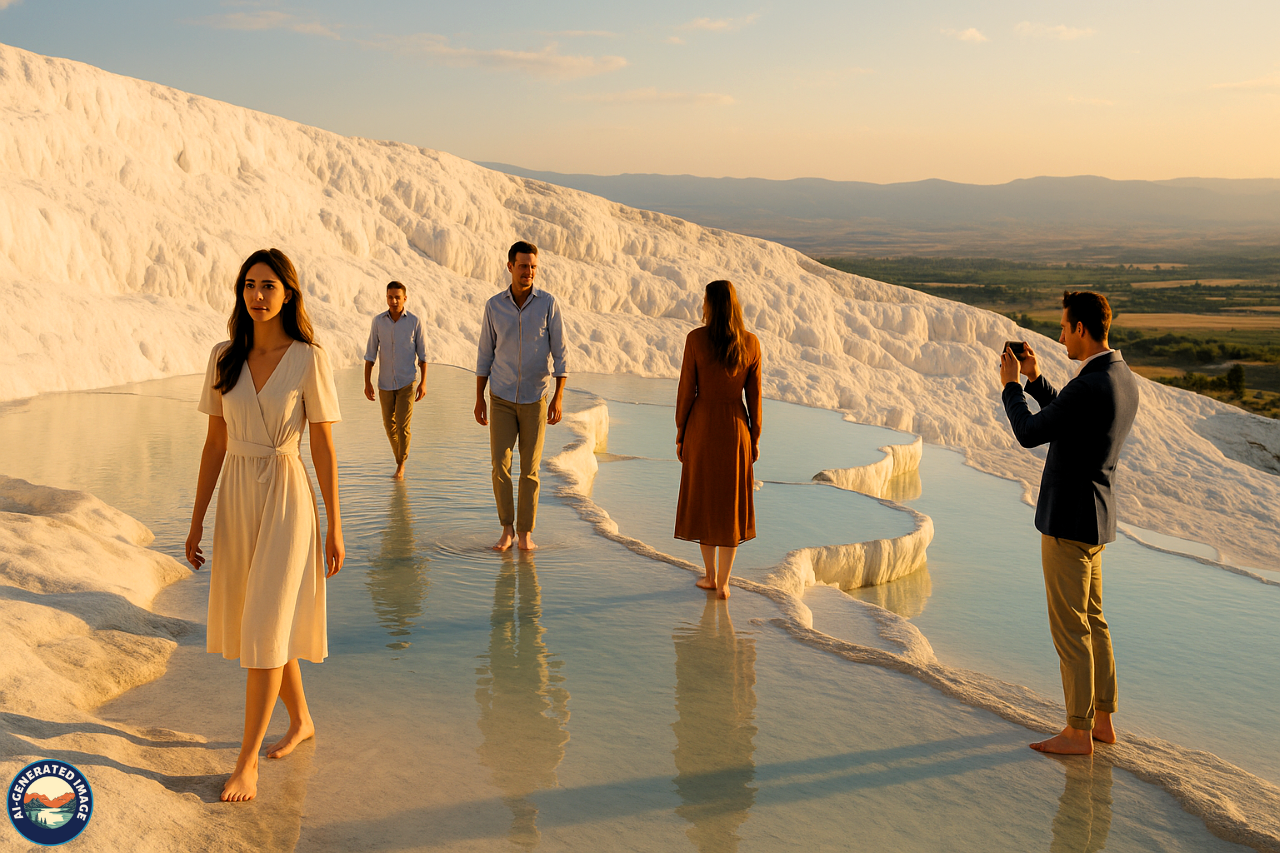Introduction
Pamukkale, meaning “Cotton Castle” in Turkish, is one of the most iconic natural wonders in Turkey. Located in Denizli Province in the southwest of the country, this mesmerizing site is famous for its brilliant white terraces formed by mineral-rich thermal waters. Recognized as a UNESCO World Heritage Site, Pamukkale offers not only spectacular natural beauty but also a deep connection to ancient history through the ruins of Hierapolis, a Greco-Roman spa city.
In this guide, we explore everything you need to know about Pamukkale — from its unique geological formation to the top things to do, the best times to visit, travel tips, and more.
The Geology and Formation of Pamukkale
The dazzling white terraces of Pamukkale have formed over thousands of years. The area sits along fault lines that allow hot, mineral-laden water to emerge at the surface. As the water cools, it deposits calcium carbonate, which solidifies over time to create the famous travertine terraces.
These terraces look like frozen waterfalls or giant steps covered in snow, creating a surreal landscape that attracts visitors from around the world. The process continues today, as thermal waters flow and deposit new layers of minerals, gradually shaping and reshaping the formations.
Historical Significance: The Ancient City of Hierapolis
Above the terraces lies Hierapolis, an ancient city with a rich and fascinating history. Founded in the 2nd century BCE by the kings of Pergamon, Hierapolis thrived during Roman and Byzantine times as a spa city, thanks to the healing reputation of its thermal springs.
Visitors can explore impressive ruins, including:
-
The Grand Theatre:
-
Built in Roman times, this well-preserved structure once held thousands of spectators and still showcases ornate carvings and a commanding view of the area.

-
The Necropolis:
-
This ancient cemetery stretches over two kilometers and features sarcophagi, tombs, and monuments that reveal the city’s importance as a healing center where people came to spend their final days.

-
The Temple of Apollo:
-
Dedicated to the city’s primary deity, this site reflects Hierapolis’s religious significance.

-
The Plutonium:
-
A cave that ancient priests used for rituals, believed to be an entrance to the underworld due to its toxic gases.

Hierapolis reflects the deep connection between natural wonders and ancient civilizations that sought their powers.
Pamukkale Thermal Pools: The Natural Spa
Pamukkale’s thermal pools have been celebrated for centuries for their supposed therapeutic properties. The waters, rich in minerals, have been used for ailments such as joint pain, skin conditions, and circulatory problems.
A highlight is Cleopatra’s Pool, where visitors can swim among ancient marble columns that are believed to have fallen during earthquakes. The pool combines the charm of history with the soothing embrace of warm waters, creating a memorable experience.
While parts of Pamukkale’s terraces are open for visitors to wade through, other areas are off-limits to protect the fragile formations. Tourists must walk barefoot on the terraces to help preserve the site.
Best Things to Do
🦶 Walk on the Travertine Terraces
Enjoy the unique feeling of warm water beneath your feet as you stroll along the striking white formations.
🏊 Swim in Cleopatra’s Pool
Float among ancient ruins and feel the warmth of the mineral waters that have been treasured since antiquity.
🏛 Visit Hierapolis
Wander through the ruins of temples, theatres, and baths that tell stories of a bygone era.
🏺 Explore the Archaeological Museum
Discover artifacts from Hierapolis and surrounding ancient cities, including statues, jewelry, and mosaics.
🪂 Try Paragliding
See Pamukkale from above and marvel at the white terraces against the backdrop of the fertile valley.
📸 Capture the Sunset
The golden glow on the terraces at dusk creates picture-perfect moments for photographers.
When to Visit
The ideal times to visit Pamukkale are spring (April to June) and autumn (September to October). During these periods, the weather is pleasant, and the site is less crowded compared to the busy summer season.
☀️ Summer brings high temperatures, which can make walking on the terraces in the heat uncomfortable.
❄️ Winter sees fewer tourists, and although the weather can be chilly, the hot springs provide a cozy contrast to the cold air.
How to Reach
Pamukkale is most easily accessed via the nearby city of Denizli, located about 20 kilometers away.
✈️ By Air
-
The closest airport is Denizli Çardak Airport.
-
You can also fly into Izmir Adnan Menderes Airport, though it’s farther (around 3.5 hours by car).
🚌 By Bus
Regular bus services to Denizli depart from major Turkish cities. From Denizli, local minibuses or taxis can take you to Pamukkale.
🚗 By Car
A rental car offers flexibility and is convenient if you plan to explore other historical sites nearby.
Where to Stay
Visitors can choose from a range of accommodations:
🏠 Guesthouses
Affordable and welcoming, often family-run, providing basic comfort.
🏨 Boutique Hotels
Offer stylish rooms with views of the terraces and amenities like pools.
🌿 Thermal Spa Resorts
Located in Karahayit, known for its red thermal waters, these resorts provide luxurious spa experiences.
Responsible Tourism and Preservation
Pamukkale’s popularity has led to challenges in protecting its delicate landscape. In the past, unchecked tourism and hotel development caused damage, but today the site is carefully managed.
🌱 Efforts include:
-
Banning vehicles and hotels near the terraces.
-
Limiting access to specific sections.
-
Enforcing barefoot walking on the travertines.
Visitors play an important role in preserving Pamukkale by following the guidelines and respecting the natural environment.
Tips for First-Time Visitors
✔ Bring essentials:
swimwear, hat, sunscreen, and a towel.
✔ Timing:
Visit early in the morning or late in the day to avoid crowds and heat.
✔ Entry:
A single ticket provides access to both the terraces and Hierapolis. Cleopatra’s Pool requires an extra fee.
✔ Safety:
Walk carefully, as the wet limestone can be slippery.
Conclusion
Pamukkale is more than just a scenic spot — it is a place where the wonders of nature and the achievements of ancient civilizations come together. Whether you are soaking in the warm pools, exploring the ruins of Hierapolis, or simply admiring the breathtaking view, Pamukkale promises an unforgettable experience. By traveling responsibly, you can help protect this incredible site for generations to come.
FAQs
Can you walk on the Pamukkale terraces?
Yes, but only barefoot and on designated pathways to protect the formations.
Is swimming allowed in the thermal pools?
You can swim in Cleopatra’s Pool and some sections of the thermal waters.
How much time should I plan for a visit?
At least 3 to 5 hours. A full day allows you to explore more thoroughly.
Do I need a tour guide?
Not required, but a guide can enrich your visit with fascinating details.
Is the site suitable for families?
Yes. Families with children and elderly members can enjoy Pamukkale, though some surfaces may require extra care.
What are the entry fees?
Expect around 400-500 Turkish Lira for a combined ticket. Cleopatra’s Pool has a separate fee. Prices can change, so check official sources before your visit.

